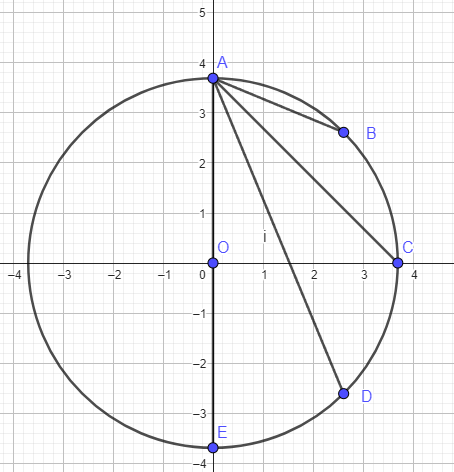Let ABCDEFGH be the octagon and let it be inscribed in a circle
We can find the radius of the circle as follows
(2sqrt 2)^2 = 2r^2 - 2r^2* (1/sqrt2)
8 = r^2 (2 - 2/sqrt 2)
8 = r^2 (2 -sqrt (2))
8 / (2 -sqrt 2) = r^2
8 (2 + sqrt 2) / (4 -2) = r^2
4 (2 + sqrt 2) = r^2
r = 2sqrt [ 2 +sqrt 2] = sqrt [ 8 + sqrt 32]
Let A= (0 , sqrt [8 + sqrt 32[ )
Let E = ( 0 . -sqrt [8 +sqrt 32] )
Let C = (sqrt [8 + sqrt 32] , 0]
Let D = ( sqrt [8 + sqrt32] /sqrt 2 , -sqrt[8-sqrt32] /sqrt 2) = (sqrt [4 + sqrt 8] , -sqrt [4 +sqrt 8] )

There are only four diagonals of differing lengths
The easiest one to calculate is AE = 2r = 2sqrt [ 8 + sqrt32] = 2sqrt [8 + 4sqrt 2 ]
AD = sqrt [ ( sqrt [4 + sqrt 8[)^2 + ( sqrt [8 +sqrt 32) ] + sqrt [4 +sqrt 8] ^2 ] = sqrt [ 24 + 24sqrt 2]
AB = sqrt (8)
AC = sqrt [ ( sqrt [8 + sqrt 32 ] )^2 + ( sqrt [8 +sqrt 32 ] )^2 ]= sqrt [ 16 + 8sqrt 2 ]
Sum of squares of differing length diagonals
AE^2 + AD^2 + AB^2 + AC^2 =
4 [8 + 4sqrt 2] + [24 + 24sqrt 2] + 8 + 16 + 8sqrt 2 = 80 + 48sqrt 2


